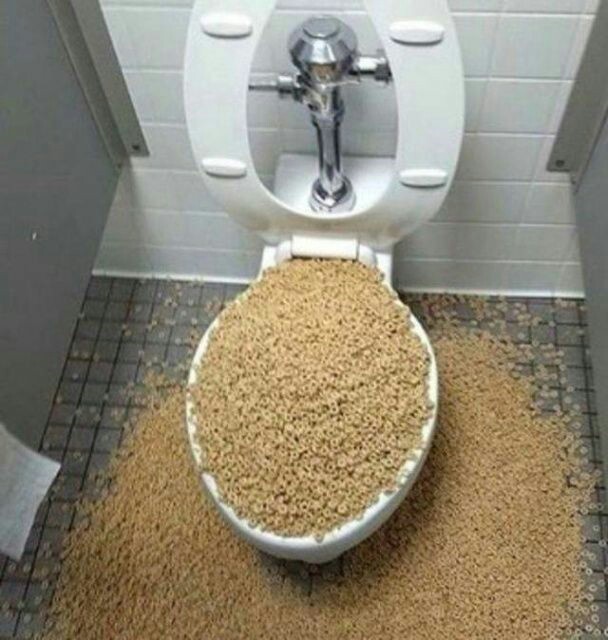Do you find yourself looking for know-how on What Can Happen If You Flush Food Down the Toilet??

Intro
Lots of people are commonly confronted with the predicament of what to do with food waste, especially when it concerns leftovers or scraps. One usual concern that arises is whether it's okay to purge food down the toilet. In this short article, we'll look into the reasons that individuals might consider flushing food, the consequences of doing so, and different techniques for correct disposal.
Reasons individuals might take into consideration purging food
Lack of recognition
Some people might not know the prospective injury brought on by purging food down the commode. They might mistakenly think that it's a safe method.
Ease
Purging food down the bathroom may appear like a quick and easy option to taking care of undesirable scraps, specifically when there's no nearby garbage can available.
Idleness
Sometimes, individuals may simply pick to flush food out of sheer laziness, without taking into consideration the repercussions of their activities.
Consequences of flushing food down the commode
Ecological impact
Food waste that ends up in waterways can contribute to air pollution and harm marine environments. In addition, the water used to purge food can strain water sources.
Plumbing issues
Flushing food can result in clogged up pipes and drains pipes, triggering pricey plumbing fixings and aggravations.
Kinds of food that should not be purged
Coarse foods
Foods with coarse appearances such as celery or corn husks can obtain entangled in pipes and cause clogs.
Starchy foods
Starchy foods like pasta and rice can soak up water and swell, leading to clogs in pipes.
Oils and fats
Greasy foods like bacon or food preparation oils should never be purged down the bathroom as they can solidify and trigger obstructions.
Proper disposal methods for food waste
Utilizing a waste disposal unit
For homes outfitted with garbage disposals, food scraps can be ground up and flushed with the pipes system. However, not all foods are suitable for disposal in this fashion.
Recycling
Certain food packaging materials can be recycled, lowering waste and reducing ecological influence.
Composting
Composting is an environmentally friendly way to take care of food waste. Organic materials can be composted and made use of to enrich soil for horticulture.
The significance of proper waste monitoring
Decreasing ecological injury
Proper waste administration techniques, such as composting and recycling, aid decrease contamination and maintain natural resources for future generations.
Safeguarding pipes systems
By avoiding the method of flushing food down the commode, property owners can protect against costly pipes repair services and maintain the honesty of their plumbing systems.
Conclusion
In conclusion, while it may be alluring to flush food down the commode for convenience, it is very important to comprehend the potential effects of this activity. By adopting proper waste monitoring techniques and taking care of food waste sensibly, people can add to healthier pipes systems and a cleaner environment for all.
FLUSH FOOD DOWN THE TOILET?
FLUSHING FOOD CAN CAUSE BLOCKED DRAINS IN YOUR HOME
All of the plumbing fixtures in your home are connected to the same sewer pipe outside of your home. This outdoor sewer pipe is responsible for transporting all the wastewater from your home to the Council sewer mains. Even small pieces of food that go down the kitchen sink can cause problems for your sewer. It should therefore be obvious that flushing larger bits of food, such as meat, risks a clog in either the toilet itself or the sewer pipes. Flushing greasy food is even more problematic because oil coagulates when it cools, coating the interior lining of your pipes.
THE TOILET IS NOT A BIN
Food isn’t the only thing that people shouldn’t be flushing down the toilet. People use the toilet to dispose of all kinds of things such as tampons, makeup wipes, dental floss, kitty litter and even underwear. Water goes to great lengths to educate residents about the high costs and stress placed on wastewater treatment systems simply from people flushing the wrong stuff down the toilet. It costs taxpayers millions of dollars each year, and homeowners thousands in blocked drain repairs.
FLUSHING FOOD IS A WASTE OF WATER
Flushing food is a waste of our most precious resource - water. In June this year Level 1 water restrictions were introduced to protect water supply from drought conditions. Much of New South Wales continues to be affected by prolonged drought with recent figures revealing up to 97 per cent of the state remains in drought. Depending on whether you have a single or dual flush toilet, every single flush uses between five and 11 litres of water. In the current climate this is a huge amount of water to be wasting on flushing food that should be placed in the bin (or better yet, the compost).
https://www.jabplumbingsolutions.com.au/blog/can-you-flush-food-down-the-toilet

As a passionate reader about , I was thinking sharing that information was essential. Loved our piece of writing? Please quickly share it. Help another person check it out. Thank you so much for taking the time to read it.
Get Your Estimate Now
Comments on “Can You to Dispose of Food in the Toilet?”